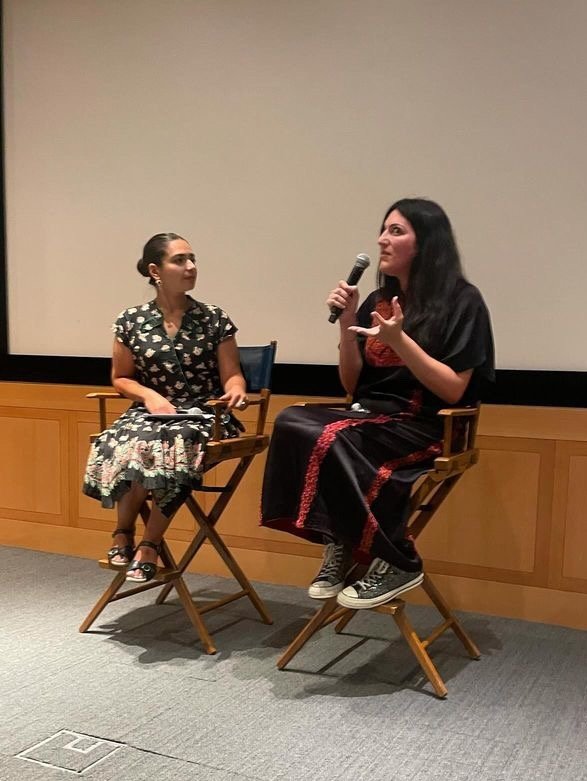Hello, dear friends of Tatreez & Tea,
Last week, my research sharing event “Understanding the Met's Palestinian Dress Collection: Intangible Heritage, Identity, and Dress” was a huge success! The room was packed, and people were standing against the wall. I was overwhelmed by the positive reception of the audience, and extremely delighted that so many colleagues who supported my research could join the event.
It was an honor to host the one-and-only Mrs. Hanan Munayyer who sat in the front row with contemporary artist Renate Ghannam. Mrs. Munayyer, and her book “Traditional Palestinian Costume” (2020) inspired certain avenues I took in my research. To be able to thank her in person and have her support in the room was a dream come true and an absolutely career-defining moment that I will never forget.
What was most memorable for me was when my colleague and interlocutor for the event, Michelle McVicker, listed off all of the departments I worked with during my fellowship year;
Department of Islamic Art
Department of Arms & Armor
Department of Textile Conservation
Department of Objects Conservation
Department of Ancient Near Eastern Art
Department of Scientific Research
Watson Library
The Antonio Ratti Textile Study and Storage Center
“The extent of these collaborations not only speaks to the truly interdisciplinary nature of her work, but also to how her positionality as a Met fellow has allowed her to conduct research in unprecedented ways for the subject matter and its material culture,” Michelle said, with tears in her eyes.
It was an emotional moment for me too, personally and professionally, to reflect on all of the departments that supported my work and the immense privilege it has been to work with top scholars in their fields, as well as the state-of-the-art instruments on-hand these past few years.
I had an extremely difficult year for a variety of reasons. The research I presented, and the essay, do not reflect the ease I experienced to complete the work that I did—the research reveals just how high I jumped when obstacles were placed in my way. Like many of you, I am watching the Olympics and can’t help but feel a kinship with the Palestinian athletes: many of us who are operating at the top of our fields are in our own kind of Olympics that never seems end. We have to work harder, faster, stronger while also maintaining a level of resilience to scrutiny that most people cannot imagine or understand. This makes your support even more sacred to me.
The next day, on July 26, my essay “Tatreez in Time The memory, meaning, and makers of Palestinian embroidery.” was published on the Met’s Perspectives, edited by Naib Mian and Christopher Alessandrini. This is the first-ever essay on Palestinian embroidery on the Met’s website. In this essay, I detail how Palestinian embroidery has changed over time, and in my studies, how it reflects so much more than identity through dress, but continuity in cultural practices throughout the centuries. I use tatreez to illustrate our Indigenous connection to Palestine, and how the thobe serves as a proxy for land on our bodies. I would like to express my sincere gratitude to Naib and Christopher who really stuck by my side and protected my voice through the rigorous editorial process.
If you enjoy seeing my work represented at the Met, and seeing your own image as a Palestinian in museum spaces, please share your feedback citing specifically on this article and my work, by emailing feedback@metmuseum.org and info@metmuseum.org. Sharing a few words of support will go a long way in the sea of public scrutiny.
Until then, enjoy some photographs from the researching sharing event on July 25, with some of my favorite people.
Warmly,
Wafa












